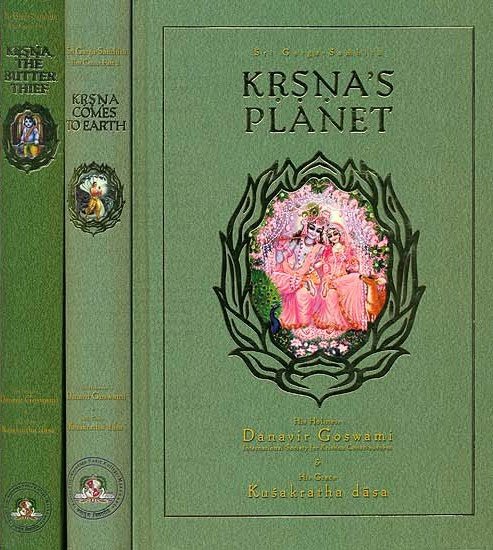Garga Samhita (English)
by Danavir Goswami | 425,489 words
The Garga-samhita Verse 6.2.27, English translation, including word-by-word: This text represents a Vaishnava scripture which narrates the life Krishna, It was composed in seventeen cantos by Garga Muni: an ancient sage and priest of the Yadu dynasty having. This is verse 6 of Chapter 2 (Residence in Shri Dvaraka) of Canto 6 (dvaraka-khanda).
Verse 6.2.27
Sanskrit text, transliteration and word-by-word meaning:
नमः पङ्कज-नाभाय
नमः पङ्कज-मालिने
नमः पङ्कज-नेत्राय
नमस् ते पङ्कजाङ्घ्रये
namaḥ paṅkaja-nābhāya
namaḥ paṅkaja-māline
namaḥ paṅkaja-netrāya
namas te paṅkajāṅghraye
namaḥ—all respectful obeisances; paṅkaja-nābhāya—unto the Lord who has a specific depression resembling a lotus flower in the center ofHis abdomen; namaḥ—obeisances; paṅkaja-māline—one who is always decorated with a garland of lotus flowers; namaḥ—obeisances; paṅkaja-netrāya—one whose galnce is as cooling as a lotus flower; namaḥ te—respectful obeisances unto You; paṅkajāṅghraye—unto You, the soles of whose feet are engraved with lotus flowers (and who are therefore said to possess lotus feet).
English translation of verse 6.2.27:
My respectful obeisances are unto you, O Lord, whose abdomen is marked with a dpression like a lotus flower, who are always decorated with garlands of lotus flowers, whose glance is as cool as the lotus, and whose feet are engraved with lotuses *.
